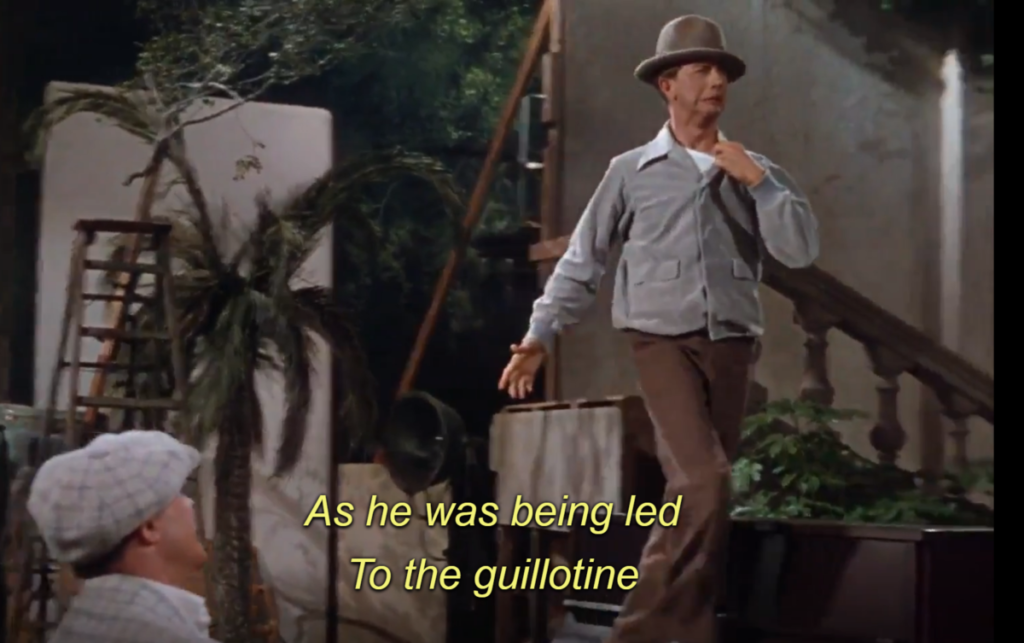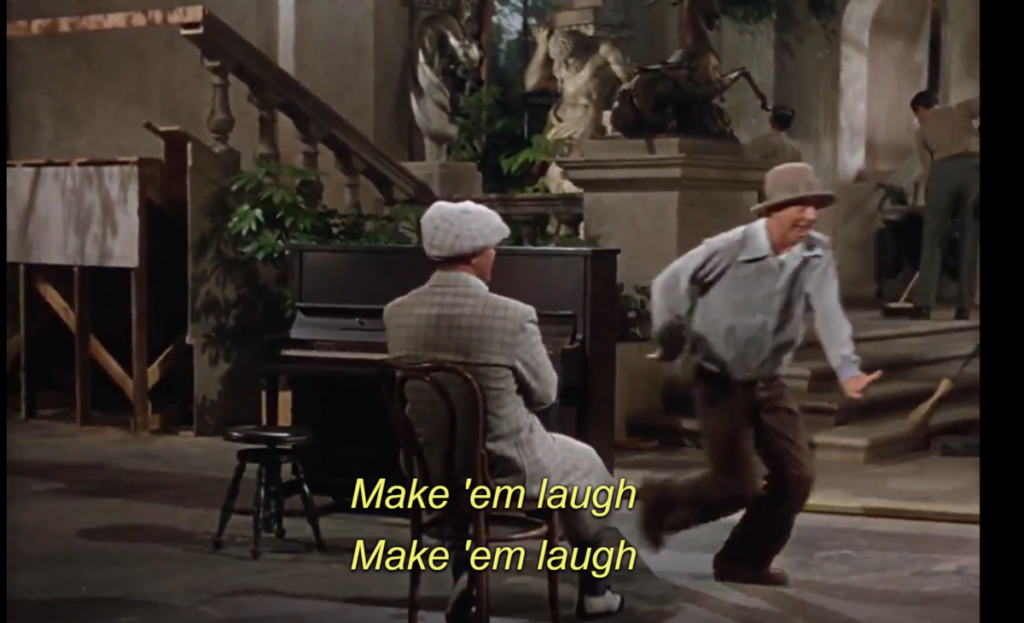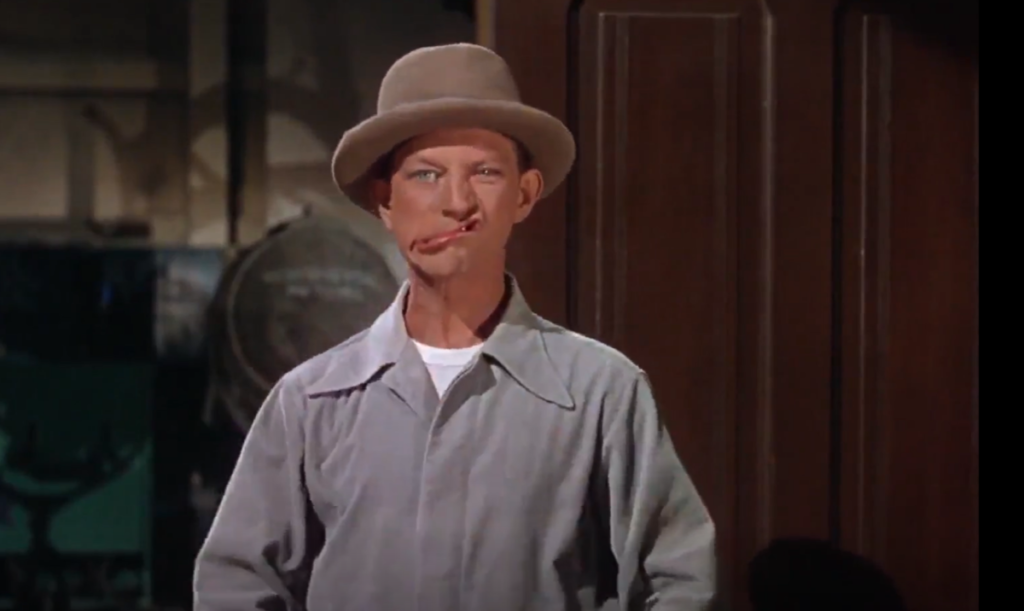Of its many musical numbers, Singin’ in the Rain features Make ’em Laugh, performed by Cosmo Brown. Believing his buddy Don requires a pick-me-up, Cosmo erupts into a spontaneous display of song and dance. And while his physical motions remain semi-plausible for the feature (or at least, plausible in the context of the universe), the sounds associated with his movements very much break all logic.

In the build-up to the scene, Cosmo stomps on a piano, creating the diegetic sound-effect of clumps of piano keys being played instead of footsteps. This sound is highly likely to have been recorded in a sound studio with a piano in an entirely quiet environment and layered in post after the fact. By doing this mixing in post, the audio editor is also able to specifically select keys which sound as discordant as possible.
So far though, the sound effects are still entirely diegetic. This will not remain the case.
The first note of the actual score actually matches the chord “accidentally” created by the final piano step, a cohesion that wouldn’t be possible in the absence of artificially precisely picking in the mixing studio which piano keys to hear the sounds of.

Cosmo takes a large leap down and the musical number begins in earnest, his footsteps in sync with the now entirely non-diegetic backing track, something that is not unique to this scene, but interestingly not the only form of music that accompanies dance in this film. We see both non-diegetic music in this scene, but also diegetic music during the fantasy sequence displaying their planned movie musical.
Throughout the song, we hear trumpets accompanying punch lines, and softened instruments accompanying confusion and pauses in Cosmo. In this way, the volume and timbre of the music provides an external, exaggerated mirror of Cosmo’s feelings as he is singing, making it effortless for the audience to follow his internal state, while also being very much aided by his physical movements and expressions.

As he adjusts his face in this scene, the sound effects are entirely non-diegetic, as though we have seen plenty of workers in the background who could be viable candidates for any mechanical sound effects if we were willing to suspend our disbelief for the utter coincidence of timing, there is nothing that makes the precise keyboard key-changing sound that we hear as he changes his face.
Donald O’Connor’s incredibly precise facial movements plus the mechanical keyboard-effects both create the illusion that he is not quite a human in this scene, but instead momentarily a machine, entirely for mesmerising comedic effect (I rewatched this short segment about three times on my first viewing).
The perfect timing (achieved through having the score written prior to the performance) as well as the softening of the backing track to highlight the audibility of the mechanical sound make this a wholey hypnotising three seconds in this three-minute song, just one of the many instances of wonders with sound achieved in Singin’ in the Rain.
This is such a detailed breakdown of this scene, Space! Yesterday, when watching the film, I was really hoping someone would blog about how genius and intricate this scene is (kudos! it was you!) because of the use of SO MANY sound elements all mixed together in a couple minutes. With the combination of the musical score in the background mixed with the non-diegetic sound effects, this whole number gave me a kind of Looney Tunes feel. Good thing, because Looney Tunes funny appeal comes a lot from the way their sound (both music and sound effects) works with the animations on screen. What you said about the last piano chord was something I did not notice, but makes total sense. It makes me wonder how many small details like that in film go unnoticed because they feel so natural to us viewers (hearers in this case). You don’t notice it until its gone! This concept goes for most things we learn in this class, however, its always a good reminder to stay active when viewing because if not you miss these cool details.